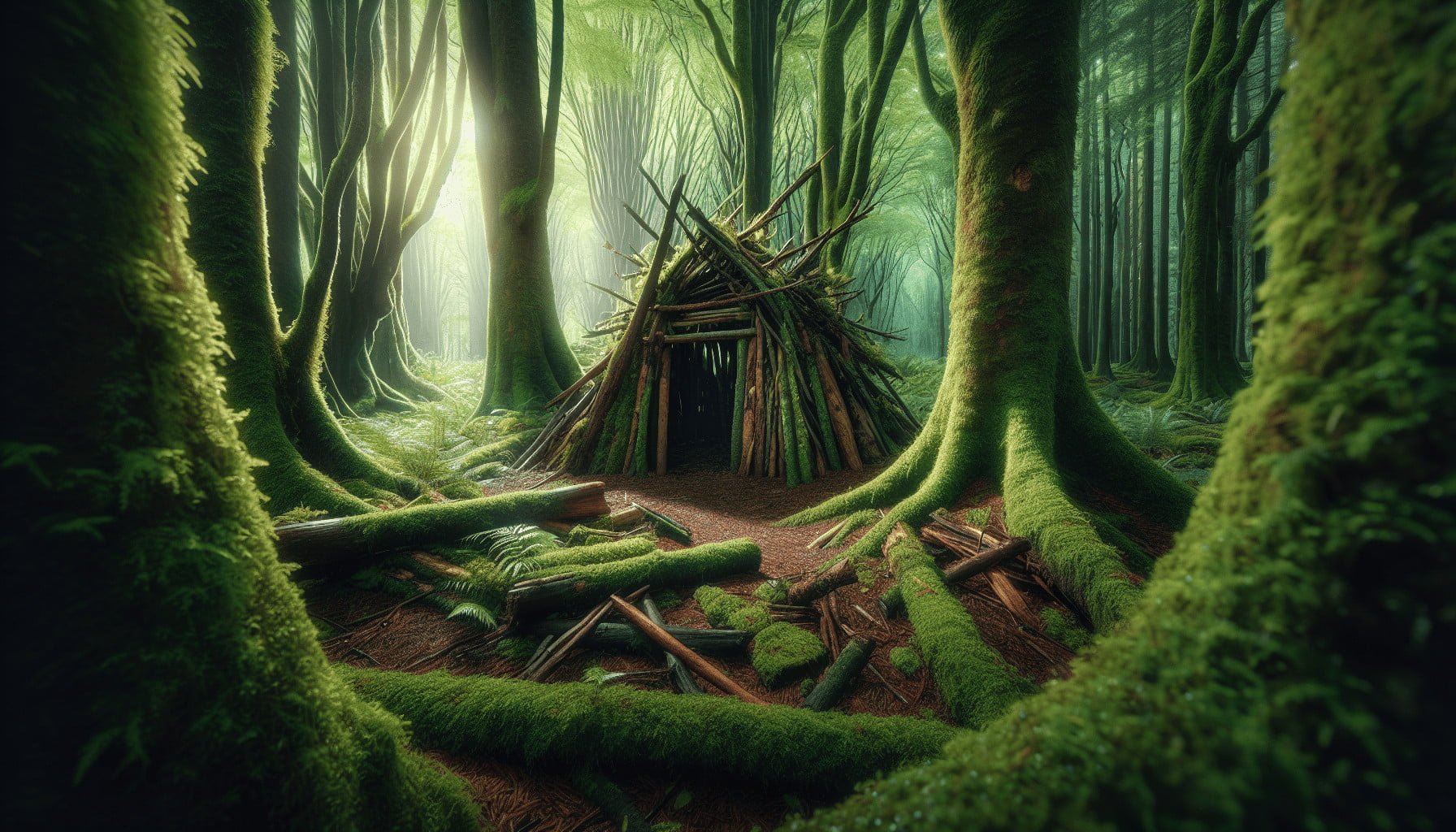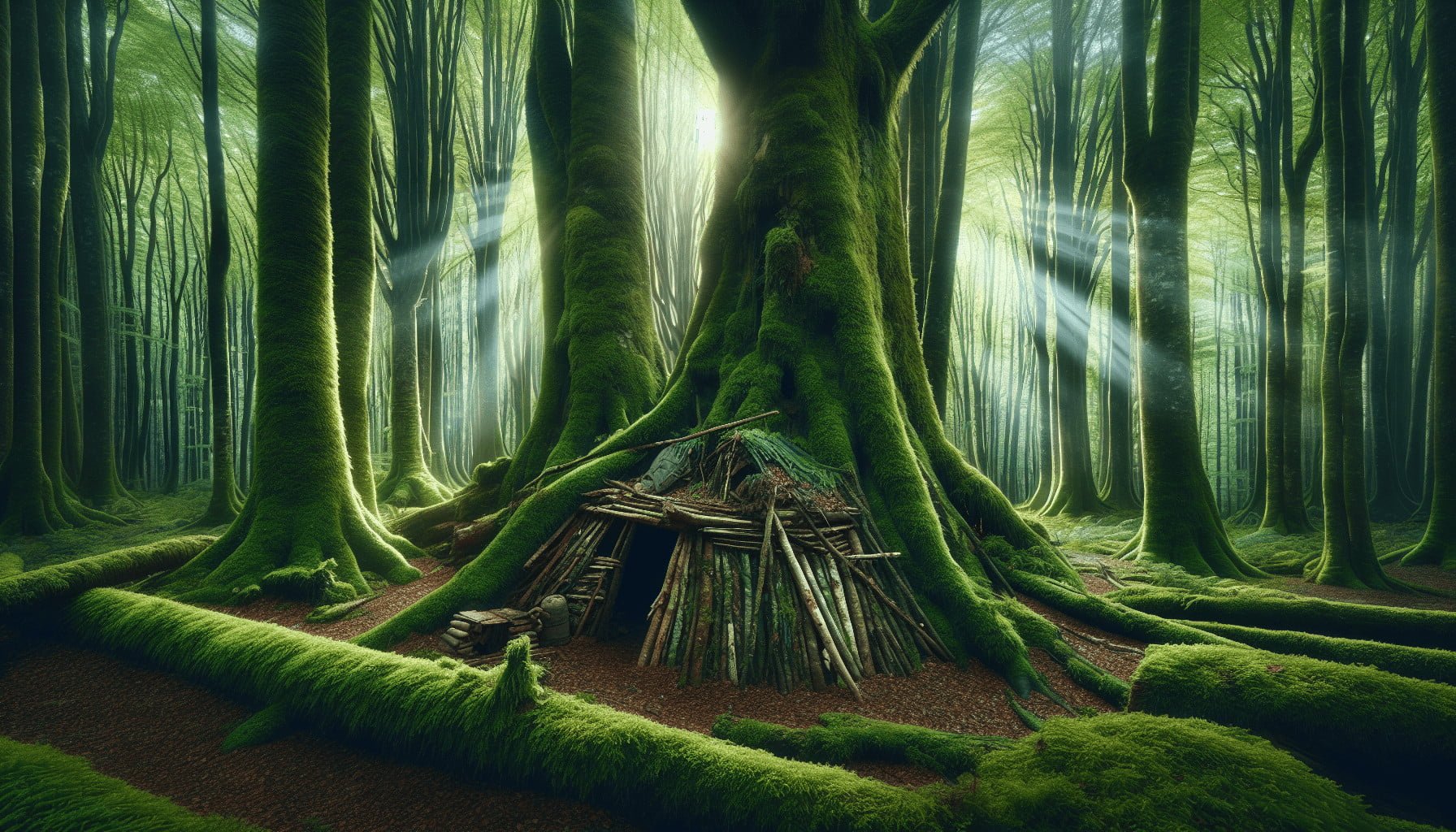In “Best Locations For Building A Wilderness Shelter,” you’ll discover expert advice on selecting the perfect spot for your next outdoor adventure. From the ideal terrain to sources of natural resources, the article guides you through the essential elements to consider when building a safe and comfortable wilderness shelter. Whether you’re a seasoned survivalist or a curious beginner, you’ll find invaluable tips to enhance your skills and make the most of your time in the great outdoors.
The longing for nature and the call of the wild can pull you out of the hustle and bustle of everyday life. Whether you are an experienced survivalist or a novice adventurer, having the right location for your wilderness shelter is crucial. It can make the difference between an enjoyable experience and a challenging ordeal.
Understanding the Importance of Location
When it comes to building a shelter in the wild, location is everything. Picking the wrong spot can expose you to harsh weather, wildlife, and other hazards. On the other hand, choosing a prime location can provide you with natural resources, safety, and comfort.
Key Considerations
Before getting into specific locations, let’s go over some key factors to consider when selecting your wilderness shelter site:
- Proximity to Water: Access to fresh water is crucial.
- Protective Cover: Natural barriers against the elements.
- Availability of Building Materials: Local resources for shelter construction.
- Terrain: Avoiding areas prone to flooding or landslides.
- Wildlife: Being aware of the local fauna.
- Safety: Staying clear of hazardous spots.
Understanding and evaluating these factors will help you make an informed decision.
Types of Wilderness Locations
There are various types of wilderness environments where you might find yourself needing to build a shelter. Each type has its own set of advantages and challenges.
Forested Areas
Forests are rich in resources, making them one of the best locations for building a wilderness shelter. They offer an abundance of building materials like wood and leaves, as well as natural cover from rain and sun.
Pros
- Ample supply of materials.
- Good cover from elements.
- Diverse wildlife and vegetation for food and medicinal uses.
Cons
- Dense vegetation can make movement difficult.
- Risk of falling branches or trees.
- Wildlife may pose a threat.
Mountainous Regions
Mountains offer breath-taking views and an abundance of unique survival opportunities. Their elevation can offer natural protection, but they also come with significant risks.
Pros
- Elevated sites can be more defensible.
- Plenty of rocks and boulders for building solid structures.
- Cooler temperatures can be a relief in hot climates.
Cons
- Harsh weather conditions.
- Scarce vegetation and wildlife at higher elevations.
- Risk of altitude sickness.
Deserts
Deserts might not seem like ideal locations for building a shelter, but they offer unique opportunities. Their sparse environment requires ingenuity and adaptability.
Pros
- Abundance of open space.
- Dry climate reduces the risk of hypothermia.
- Few predatory animals.
Cons
- Harsh temperature fluctuations.
- Limited water and food sources.
- Exposure to sun and sandstorms.
Coastal Areas
Building a shelter near a coast can be advantageous, especially if you’re relying on the ocean for food. However, the dynamic environment can prove challenging.
Pros
- Easy access to water.
- Potential for fishing and gathering seafood.
- Natural beauty and abundance of driftwood for shelter.
Cons
- Risk of tides and storm surges.
- Saltwater can corrode tools and materials.
- Limited vegetation.

Practical Steps for Choosing the Ideal Spot
Now that you understand the pros and cons of different wilderness environments, let’s get into the nitty-gritty of choosing the ideal location for your shelter.
Survey the Area
Take time to scout an area thoroughly. Look for signs of water, animal tracks, and natural windbreaks. Make mental notes or even draw a simple map of the terrain.
Check for Elevation
Opt for a slight elevation to prevent water from pooling around your shelter. A small hill or slope can also offer better wind protection.
Evaluate Natural Resources
Make sure the area has ample natural resources for building and sustaining your shelter. This can include wood, leaves, rocks, and even mud.
Assess Safety
Ensure the location is safe from potential hazards like falling trees, flooding, or animal activity. It’s also wise to stay clear of any potential avalanche or landslide zones in mountainous areas.
Test the Soil
Firm, well-drained soil is essential for building a stable shelter. Sandy or extremely soft soils can make construction difficult.
Distance from Water Sources
Pick a spot that is relatively close to a water source but not so close that you risk flooding or attracting wildlife directly to your shelter.
Building Your Wilderness Shelter
After identifying the ideal location, the next step is to build. The type of shelter you construct will depend on the resources available and the environment you’re in.
Types of Wilderness Shelters
Here are some common types of shelters you can build in different wilderness settings:
Lean-To Shelter
A lean-to shelter is one of the simplest and most versatile options. It requires a ridgepole supported by two trees or rocks, with branches and leaves leaned against one side.
Pros:
- Quick and easy to construct.
- Uses minimal resources.
Cons:
- Limited protection from the elements.
A-Frame Shelter
An A-frame shelter offers more protection than a lean-to. It involves building a frame in the shape of an “A” and covering it with branches, leaves, or other materials.
Pros:
- Better protection from wind and rain.
- More space inside.
Cons:
- Requires more time and resources to build.
Snow Cave
Ideal for snowy environments, a snow cave involves digging into a snowbank to create a sheltered space.
Pros:
- Excellent insulation.
- Naturally camouflaged.
Cons:
- Requires specific conditions (snow depth and consistency).
- Risk of collapse.
Desert Pit Shelter
In desert environments, digging a pit can provide much-needed relief from the harsh sun. Cover the top with available materials to create shade.
Pros:
- Effective at reducing exposure to the sun.
Cons:
- Requires significant effort to dig.
- Limited airflow can cause discomfort.

Tips for Enhancing Your Shelter
Building the shelter is just the beginning. There are various ways to improve its effectiveness and comfort.
Insulate the Floor
Using leaves, pine needles, or even a pile of clothing can help insulate the floor of your shelter and keep you warm.
Waterproofing
Use large leaves, tarps, or even plastic bags to waterproof the roof and walls of your shelter. This is especially important in rainy environments.
Ventilation
Make sure your shelter has adequate ventilation. Stagnant air can lead to discomfort and even carbon monoxide poisoning if you’re using a fire for heat.
Camouflage
Camouflage your shelter with natural materials to blend into the surroundings. This not only provides an additional layer of protection from wildlife but also helps maintain the natural beauty of the environment.
Emergency Situations
Sometimes, you won’t have the luxury of time to pick an ideal location. In emergencies, you need to act quickly and make do with what you have.
Immediate Shelter
Use a backpack, tarp, or even a large piece of clothing to create an immediate shelter. Look for natural hideaways like caves or hollow trees if you’re in a forested area.
Fire and Signal
In emergencies, a fire can serve as both a heat source and a signal for rescue. Use available resources to start a fire and keep it going.
Conclusion
Finding the best location to build a wilderness shelter involves a blend of knowledge, intuition, and practice. By understanding the pros and cons of various environments and knowing what to look for, you can ensure that your wilderness adventures are both safe and enjoyable. Next time you venture into the wild, you’ll be well-prepared to create a shelter that meets your needs and provides you with a comfortable refuge amidst nature’s splendor. So go on, embrace your adventurous spirit—you’re ready for whatever Mother Nature has in store!
